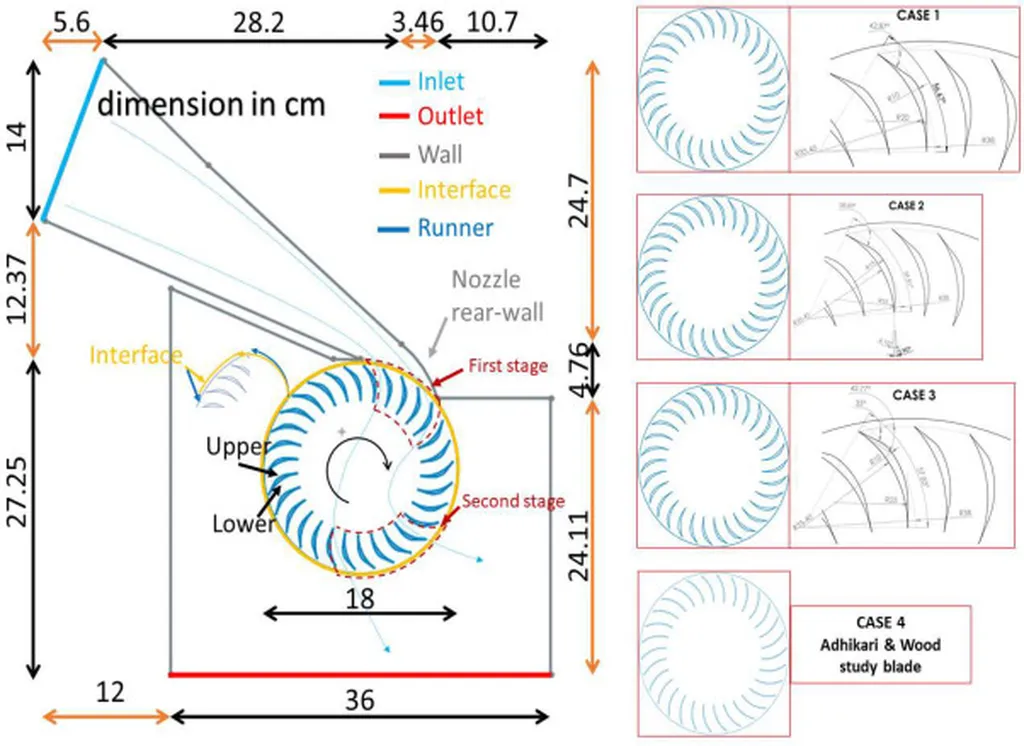In the quest for renewable energy solutions, cross-flow turbines have emerged as a promising technology for harnessing both wind and tidal power. These turbines, which rotate about an axis perpendicular to the incoming flow, present unique aerodynamic challenges and opportunities. A recent study published in the Journal of Renewable and Sustainable Energy has shed light on the impact of blade camber on the performance and loading of cross-flow turbines, offering valuable insights for future design and optimization.
The study, conducted by a team of researchers from the University of Oxford, focused on the role of blade camber—the curvature of the blade profile—in altering the lift, drag, and pitching moment of the blades. The team compared the performance of three types of blades: symmetrical NACA 0018 foils, and two cambered variants, NACA 2418, with either concave-in or concave-out profiles. The turbine used in the study had a chord-to-radius ratio of 0.49, a parameter that influences the turbine’s aerodynamic performance.
The researchers found that the concave-out blades, which enhance virtual camber and lift during the power stroke, exhibited sub-optimal performance. In contrast, the concave-in cambered blades slightly improved the performance of the symmetrical blades by enhancing downstream flow reattachment. This improvement more than compensated for the reduced peak power generation observed with the concave-in design. The difference in performance between the cambered foils grew with increasing tip-speed ratio, a dimensionless parameter that relates the blade’s rotational speed to the incoming flow velocity.
One of the most significant findings of the study was that the concave-in blades reduced peak loading by 13%. This reduction in loading could prove critical in future turbine designs, particularly at high tip-speed ratios, as it may lead to improved durability and reduced maintenance costs.
The study also explored the near-blade flow fields, revealing that the influence of geometric camber is non-linear. The researchers cautioned that using a simplistic summation of both geometric and virtual camber to account for camber effects may be overly simplistic. Despite this complexity, corresponding validated simulations suggested that a small but positive total camber (geometric plus virtual) is optimal for the turbine studied.
The findings of this study have important implications for the energy sector, particularly for the design and optimization of cross-flow turbines. By understanding the complex interplay between geometric and virtual camber, engineers can develop more efficient and durable turbines, ultimately contributing to the growth of renewable energy generation from both wind and tidal sources. As the world continues to grapple with the challenges of climate change and energy security, such advancements in renewable energy technology are more important than ever.
This research was published on arXiv and can be read in full [here](http://arxiv.org/abs/2509.14416v1).

